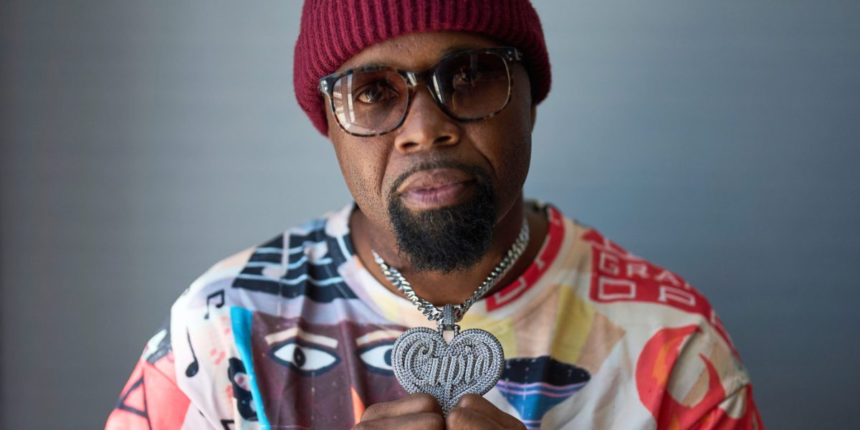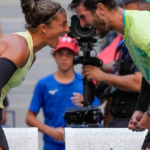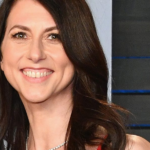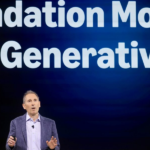“I used to watch this on TV every year, and I’m now performing,” said the 22-year-old Atlanta-area resident. “I started crying … tears of joy.”
The “Boots on the Ground” dance, which includes the rhythmic clacking of folding hand fans as the South Carolinian belts “Where them fans at?,” was created by Little during a work lunch break. After hearing a snippet on TikTok, he played around with a routine and posted it, without much thought.
“I usually get my little six views from my family … I took a nap and when I woke up, it was at 100K,” said Little, who is now in demand nationwide teaching line dance classes and hosting events. He has even been approached to create new dances. “It’s bringing people together to do a dance and share laughter.”
“With the new energy toward country music and trail ride music and African Americans’ presence in it, I think that opened up America’s eyes to what we’ve been doing down in Louisiana and Texas and Mississippi and Alabama for years,” said recording artist Cupid, known as the Line Dance King and creator of the popular “Cupid Shuffle” (2007) song and choreography.
“Their eyes have been opened to line dancing and the unity that it brings,” he said.
There is no consensus on the origins of line dancing. Some historians trace it to African celebratory tribal dances, which extended to enslaved Black Americans who sang or moved in unison during field work. Other scholars trace it to European immigrants who brought traditional folk dances from their native lands. The country western style is performed to country tunes, while soul line dancing is backed by R&B, soul and hip-hop.
Along with the “Cupid Shuffle,” routines to DJ Casper’s “Cha Cha Slide” (2000) and V.I.C.’s “Wobble” (2008) are canonized in soul line dancing, as well as the most recognized 1972 song, “Electric Boogie (The Electric Slide)” by Marcia Griffiths. But “Boots on the Ground” has introduced trail ride line dancing to many Americans outside of the Southeast.
Trail rides are socialized horseback processionals traveling to a designated location. In Black Southern culture, it is a party atmosphere with food and dancing, including niche music genres like zydeco and Southern soul, which blends R&B, blues, gospel and country.
“People didn’t really know about it. … When something is trending, it makes everybody get on the bandwagon,” said 28-year-old Jakayla Preston, who goes by the handle @_itsjakaylaa on TikTok. A professional dancer, the Houstonian began teaching line dance classes this year after persistent requests from her followers, which intensified following the “Boots on the Ground” boom. Leading classes across the country, she discovered attendance was about more than foot-taps and turns.
“I have people who are struggling and battling with a lot of things … they’ll even sometimes cry and thank me for hosting the class there, or just giving them the experience to be able come and express,” she said. “It’s a feeling that’s indescribable.”
“I never seen — ever — that many people that was out there line dancing,” said Preston, who grew up attending the rodeo. “It’s an amazing sight to see.”
Sharlene Sinegal-DeCuir, chair of African American and Diaspora Studies at Xavier University in New Orleans, said Beyoncé’s impact extends beyond music.
“Country western music: the sound, the banjo, the violin, all those things are African instruments,” said Sinegal-DeCuir, who grew up in Lafayette, Louisiana, line dancing and listening to zydeco. “She’s bringing it to the world to let the world know, no, we’re not just getting into country — we are country.”
“We know how to survive these things because we lean on family, we lean on community, and this joy,” said Sinegal-DeCuir. “The world is burning down, and we’re sitting here learning a new line dance because we’re tired of the political atmosphere … it’s a form of resistance.”
“I realized the importance of it, as far as connecting two people that don’t even see eye to eye,” said the “Flex” artist, who is readying a new album next month that he says will be the first all-line-dance album. “If you had to pick three songs that could bring people on two opposite sides of the fence together for a moment, then line dancing is definitely those types of songs.”
“I don’t think there’s any other genre more powerful than line dance,” he added.









